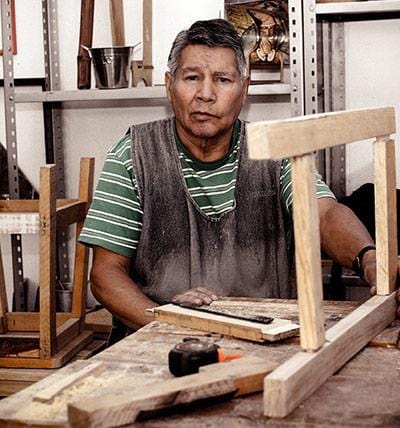Shipping costs can quietly drain your margins if left unchecked. Many businesses spend time negotiating carrier rates or optimizing delivery schedules but overlook the role pallet design plays in their overall shipping efficiency.
Custom wood pallets offer an opportunity to make your shipping process leaner without cutting corners. When your pallets are built to suit your operations, you can reduce material waste, simplify handling, and improve load performance—all factors that influence your bottom line.
Read on to see how custom wood pallets can help you cut shipping costs where it counts.
Work with the Right Manufacturer for Ongoing Savings
Choosing the right pallet manufacturer can significantly affect your long-term logistics costs. While some suppliers stick to off-the-shelf solutions, experienced custom pallet manufacturers take the time to understand your operations and suggest ways to make your supply chain more efficient. This strategic input often reveals savings you might not uncover on your own.
Beyond just building pallets, the right partner can provide design guidance based on your specific use cases. For example, they may recommend structure adjustments that align with your storage methods, shipping frequency, or handling conditions. These improvements often lead to less product waste, reduced manual handling, and smoother throughput across your system.
Ongoing consultation is another advantage worth considering. A strong manufacturer relationship doesn’t end after one order—it continues through regular evaluations and optimizations. Whether your shipping volumes change, your product dimensions shift, or your equipment is upgraded, a responsive supplier can adjust your pallet specifications accordingly to keep costs in check.
In addition, a growing number of manufacturers let you browse products online or through digital catalogs. This makes it easier to compare sizes, specs, and features on your own time. While custom pallets often require direct consultation, having access to baseline models gives you a starting point and helps clarify what you want to improve.

Save Warehouse Space with Better Stackability
Warehouse efficiency depends heavily on how well materials are stored. When pallets are designed to stack cleanly, you make better use of vertical space without compromising safety or accessibility. This is especially important in facilities where storage costs are high and floor space is limited.
Traditional pallets often leave gaps or sit unevenly when stacked, which wastes space and creates instability.
Custom pallets, on the other hand, can be designed with consistent heights and uniform profiles, allowing them to nest or stack with minimal clearance between units. This can make a measurable difference when you're storing hundreds or thousands of units at a time.
In addition, stacking that aligns properly reduces the need for excessive aisle width. When pallets fit precisely within racking systems, aisles can be narrower without interfering with forklift or jack movement. This tighter layout increases your total usable square footage without expanding the footprint of your facility.
Over time, better stackability also streamlines storage planning. When your pallets take up less space and stack more reliably, it's easier to forecast storage needs and avoid paying for overflow warehousing or offsite storage. You gain more control over how your space is used day-to-day, which can reduce costs and improve inventory visibility.
Maximize Load Efficiency with Custom Dimensions
Standard pallet sizes often create unused space during shipping. That wasted space leads to inefficiencies that drive up freight costs.
To get the most out of every shipment, consider the following ways custom pallet dimensions can increase load efficiency:
Optimized trailer and container use
When pallets are sized to the trailer or container width and height, you can avoid dead space and make full use of the available volume. This increases payload and reduces the number of shipments needed.
Improved load stability
A better-fitting pallet supports products more evenly. This limits shifting and tipping in transit, which lowers the need for secondary packaging or bracing.
Custom stacking configurations
Tailored designs allow for uniform stacking inside trailers, reducing overhead space loss. This can be especially helpful when shipping boxed goods or uniform units.
Better use of cube space
Matching pallet dimensions to your internal packaging allows more units to fit within each pallet footprint, boosting cubic efficiency without increasing pallet count.
A well-sized pallet doesn’t just carry your product—it helps control your freight expenses and makes every shipment more cost-effective.
Cut Weight to Lower Freight Charges
The weight of your pallet affects your freight bill. Heavier pallets contribute to higher costs, especially under dimensional pricing models used by many carriers. Custom wood pallets give you control over materials and construction, helping you cut excess weight without sacrificing strength.
To reduce pallet weight while maintaining durability, consider the following strategies:
Use lighter wood species for suitable products
Not every product requires a hardwood pallet. Choosing lighter species like pine or poplar for goods that don’t need heavy-duty support helps lower the base weight. This is a simple way to reduce overall load weight without compromising function.
Eliminate unnecessary deck boards and components
Extra boards and oversized materials add weight with little benefit. A careful review of your load requirements allows you to remove unneeded deck boards or reduce wood thickness where appropriate. Less material means less weight and lower freight charges.
Tailor build strength to actual weight requirements
Overbuilt pallets waste wood and money. Custom designs let you align pallet strength with the actual load being shipped. Reinforce only where needed and avoid uniform overbuilding, which adds weight without adding value.
Using the right materials in the right places can cut weight while still keeping your products secure. A leaner design reduces your shipping costs and makes your logistics more efficient.
Avoid Product Damage with Proper Support
Improper pallet support can lead to crushed corners, broken parts, and unhappy customers. A custom-built pallet gives your product the reinforcement it needs from the ground up.
The following are ways proper pallet support can reduce product damage:
Align deck boards with product weight distribution
A custom pallet can be designed to match your product’s pressure points. This means deck boards are placed exactly where weight is concentrated, helping prevent sagging or cracks during transport. It also adds stability for irregular-shaped goods that need balanced support.
Reinforce high-stress areas
Products with uneven weight—like heavy machinery or offset loads—need targeted reinforcement. Extra blocks or thicker components can be added to areas that bear the brunt of the load. This minimizes shifting and helps avoid breakage during loading, unloading, or sudden stops in transit.
Choose the right pallet structure for the product
Some loads are better supported with block pallets, while others benefit from stringer-style designs. The choice depends on how your items sit, how weight is transferred, and how the pallet is handled. A tailored design gives your shipment better load integrity and reduces unnecessary stress on the items.
Limit product overhang with correct sizing
Overhanging products are more likely to get bumped or crushed. Custom sizing ensures the pallet footprint matches the product base, keeping everything within the pallet’s edges. This is especially important for fragile or boxed goods with crushable corners.
A well-supported product is less likely to arrive damaged. With the right pallet structure and reinforcements, you can reduce claims, keep customers satisfied, and protect your bottom line.

Streamline Handling with Equipment Compatibility
Efficient material handling can make a significant difference in both speed and safety during warehouse operations. A pallet built with your equipment in mind eliminates delays, minimizes errors, and helps reduce strain on your workforce.
The following are key design features that improve pallet handling compatibility:
Ensure clean entry points for pallet jacks
Pallets should be easy to access from all necessary angles, especially with pallet jacks. Smooth entry points on multiple sides prevent operators from having to reposition loads, which slows down workflows and increases manual labor. Clean access also reduces the risk of jack damage or awkward lifts.
Design for efficient forklift operation
Pallets that pair well with forklifts can be loaded and unloaded quickly without hesitation. Proper fork spacing, reinforced entry points, and consistent gaps between deck boards all help operators align the forks with ease. This improves lifting stability and lowers the risk of tipping or shifting during movement.
Match height to conveyors and storage systems
Incompatibility with conveyors or automated storage equipment can throw off an entire line. Custom pallets can be built to match the height requirements of your handling systems, preventing jams, reducing manual corrections, and keeping operations on schedule.
A pallet that works with your equipment—not against it—can eliminate slowdowns and improve overall handling efficiency.
Lower Replacement Costs with Durable Materials
Broken pallets don’t just slow down operations—they drain your budget over time. Investing in better-built pallets reduces the need for constant replacements and keeps your supply chain moving without disruption.
The following are practical ways custom pallet manufacturers can help you reduce replacement costs through smarter material and design choices:
Choose wood types suited for your environment
Not all wood species hold up the same in every setting. If your pallets are exposed to moisture, humidity, or cold storage conditions, standard lumber may degrade quickly. Selecting a wood type that fits your environment helps extend pallet lifespan and prevent premature wear.
Reinforce high-stress areas to prevent breakage
Weak points like stringer notches or deck board ends are common failure spots. Reinforcements—such as metal fasteners, double stringers, or thicker boards in stress zones—add strength where it matters. This reduces the chances of breakage during normal handling and stacking.
Use protective coatings to guard against moisture and pests
Exposure to the elements or warehouse pests can break down untreated wood. Protective finishes—such as sealants or fungicide treatments—help prevent mold, rot, or insect damage. This makes your pallets more durable in storage and transit, especially in high-humidity environments.
Opt for higher-grade fasteners for structural integrity
Pallets built with low-quality nails or staples are more likely to loosen or fail under load. Specifying better fasteners like ring-shank nails or screw nails creates tighter, longer-lasting joints. This small upgrade can make a big difference in how well your pallets hold up over time.
Well-built pallets are more than just functional—they’re crafted wooden things designed to withstand repeated use, harsh conditions, and the demands of your supply chain. With smarter material selection and construction tailored to your use, you can cut down on breakage, protect your loads, and lower your long-term costs.
Ensure Compatibility With International Regulations
International shipping comes with strict packaging rules. Failing to meet these regulations can delay shipments, trigger fines, or result in goods being turned away at borders. Custom wood pallets designed for export can help you stay compliant and avoid unnecessary interruptions.
The following are key considerations to ensure your pallets meet global shipping standards:
Use ISPM-15 heat-treated wood for global acceptance
Heat treatment is mandatory for wood packaging used in international trade. It eliminates pests and pathogens that could threaten ecosystems in other countries. Pallets must be stamped with a clear ISPM-15 mark to pass inspection at customs.
Avoid uncertified engineered wood materials
Not all composite wood products meet international shipping requirements. Materials like oriented strand board (OSB) may be flagged unless they carry specific certifications. Using uncertified alternatives can result in rejected shipments or forced repacking at additional cost.
Design for international handling and inspection needs
Some countries have specific handling preferences. Designing pallets with consistent entry points, proper clearance, and visible treatment stamps helps facilitate smooth inspection. For one-way shipments, lightweight export-grade pallets with 4-way entry are often preferred.
Consider regional regulations and country-specific rules
Different countries may have additional requirements beyond ISPM-15. These can include documentation, labeling, or restrictions on certain wood types. A manufacturer familiar with your target markets can help align your pallet specs with local expectations.
Working with a supplier that understands global shipping standards minimizes compliance risks and keeps your shipments moving without delays.
Final Thoughts
Custom wood pallets do more than move your products—they shape how efficiently and affordably you operate. From freight savings to better storage, smarter handling, and improved product protection, a well-designed pallet supports your business at every step of the supply chain. Choosing the right pallet partner gives you control over these hidden costs and positions you to adapt as your needs evolve. By treating pallets as strategic tools instead of generic supplies, you open the door to long-term savings and stronger operational performance.
ABOUT THE AUTHOR
Fred Felton
Content Creator / Editor
Fred Felton is a copywriter, editor and social media specialist based in Durban, South Africa. He has over 20 years of experience in creating high end content. He has worked with some of the biggest brands in the world. Currently Fred specialises in the wooden arts and crafts space, focussing on innovative wooden product design. He is also a keynote speaker and has presented talks and workshops in South Africa.






